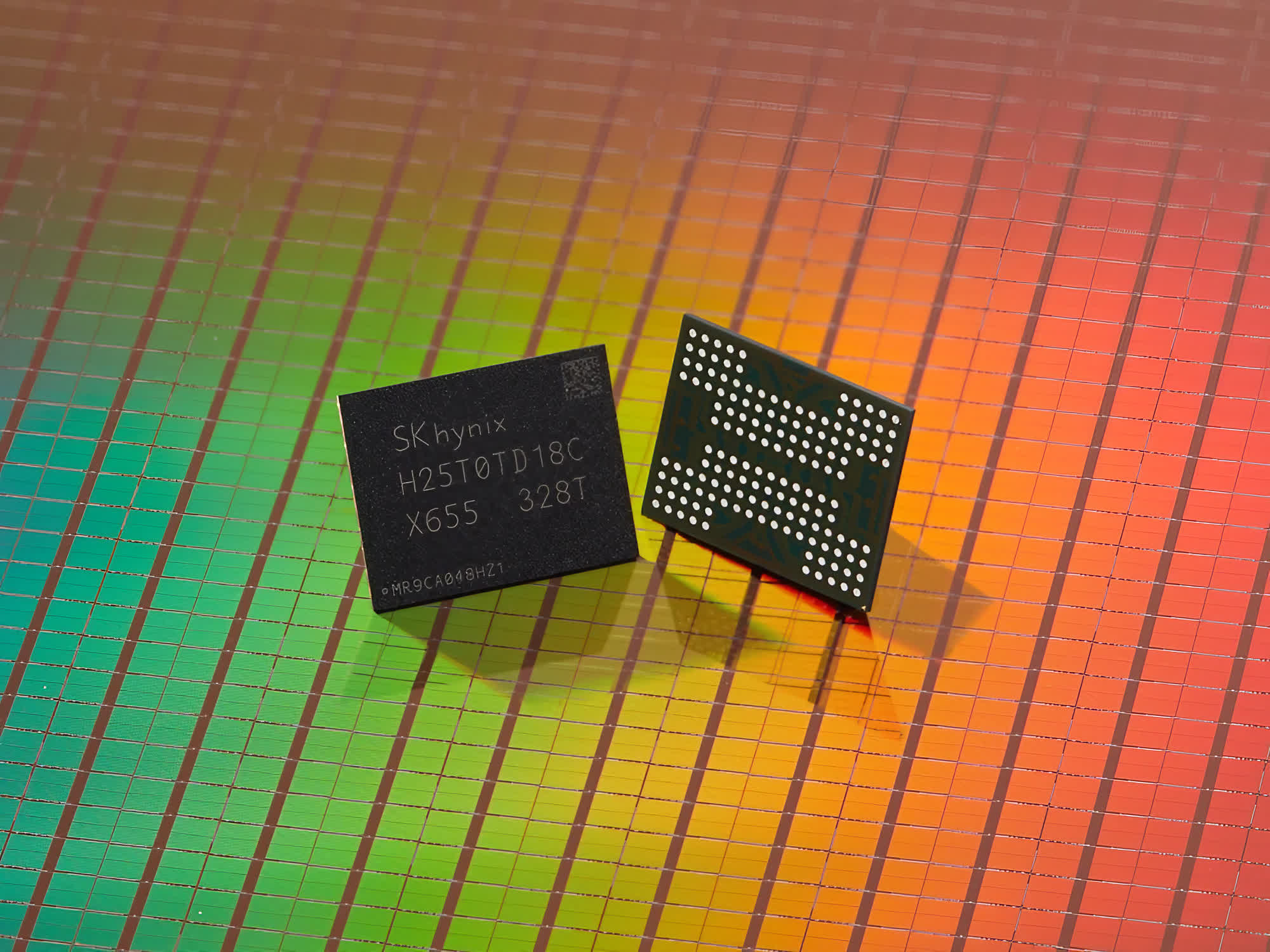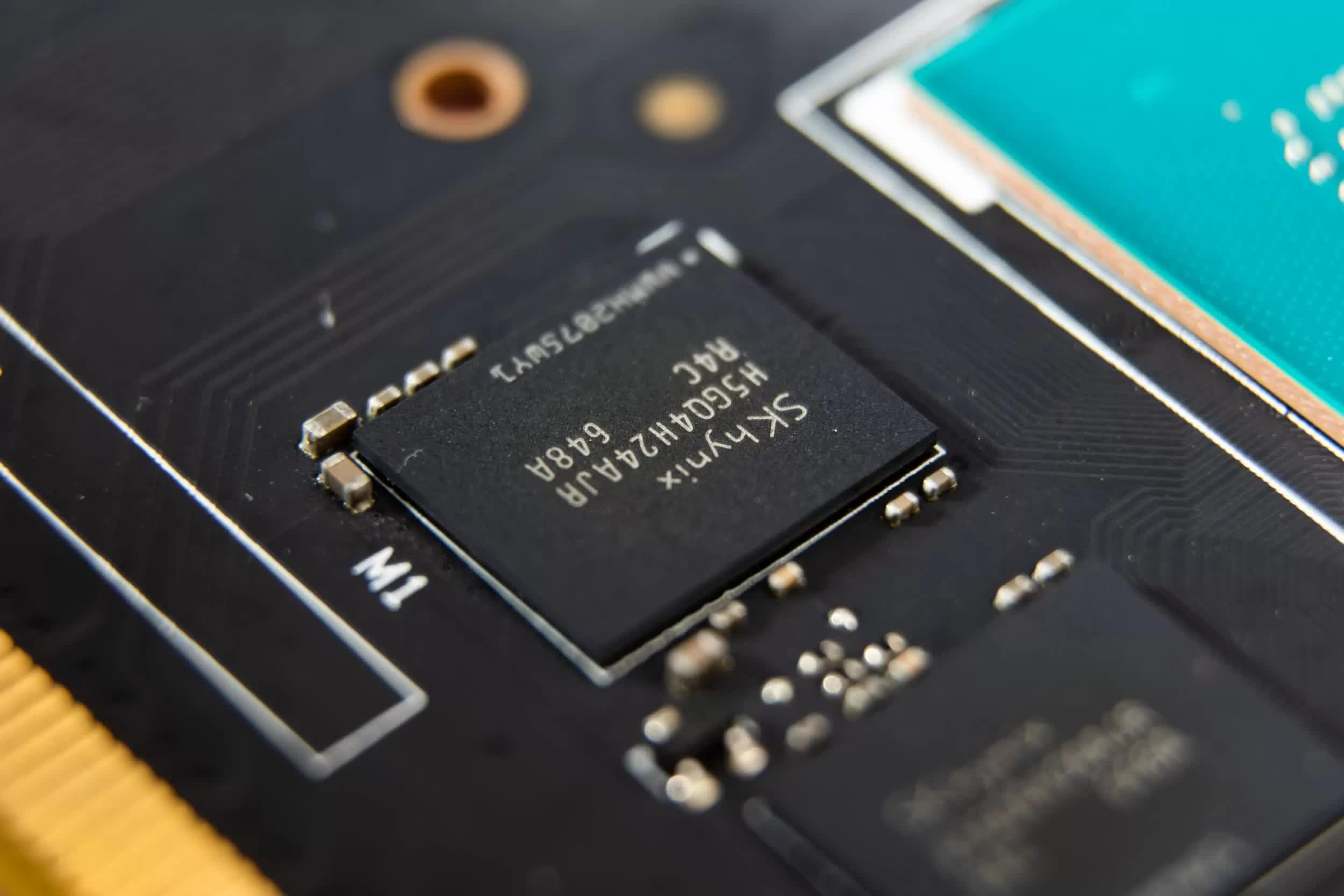In a nutshell: SK Hynix just leapfrogged rival Samsung. The world's second-largest memory chipmaker has become the first company to mass-produce triple-level cell NAND with 321 layers. The advancement should lead to higher capacity memory at an affordable price point.

SK Hynix recently released its new 1-terabit 4D NAND chips, setting a new record. The company is on a streak as it was also the first to launch its 238-layer NAND less than a year ago. Like the previous launch, the 321-layer breakthrough is significant because it could notably boost storage density for consumer and enterprise SSDs.
The densely packed chips could lead to more affordable SSDs with capacities reaching over 100TB. This breed of NAND will prove especially useful for AI data centers, though other performance-hungry applications craving energy-efficient storage should also benefit.
SK Hynix used ingenious process optimizations to cram over 300 layers into a single piece of NAND. The company's new "Three Plugs" technology simultaneously connects three memory layer vertical channels through an optimized electrical linking process. The process is known for excellent manufacturing efficiency and utilizes low-stress materials with automatic alignment correction.

However, linking all those layers created stress and alignment issues SK Hynix had to overcome. The company overcame this by developing new low-stress materials and automatic alignment correction to keep everything in order during manufacturing.
The new process also boosted production efficiency by 59 percent compared to the previous generation by reusing the same platform as the 238-layer NAND. These efficiency improvements mean better performance and lower costs in the market. The company claims the new 321-layer chips have 12 percent faster data transfers, 13 percent faster reading, and over 10 percent better power efficiency than 238-layer NAND.
SK Hynix plans to ship these new storage devices to customers in the first half of 2025. The AI market is the initial target, but ultra-high capacity SSDs for gaming rigs, media editing, and data hoarding should follow shortly after.
Samsung isn't taking this news lying down. The tech giant is already working on 400-layer NAND to arrive by 2026. It hopes to have its bonded vertical NAND tech ready by 2030, facilitating even denser chips with over 1,000 layers and SSDs potentially exceeding 200TB. Japan's Kioxia has similar plans.
SK Hynix beats Samsung by launching its 321-layer TLC NAND flash memory first